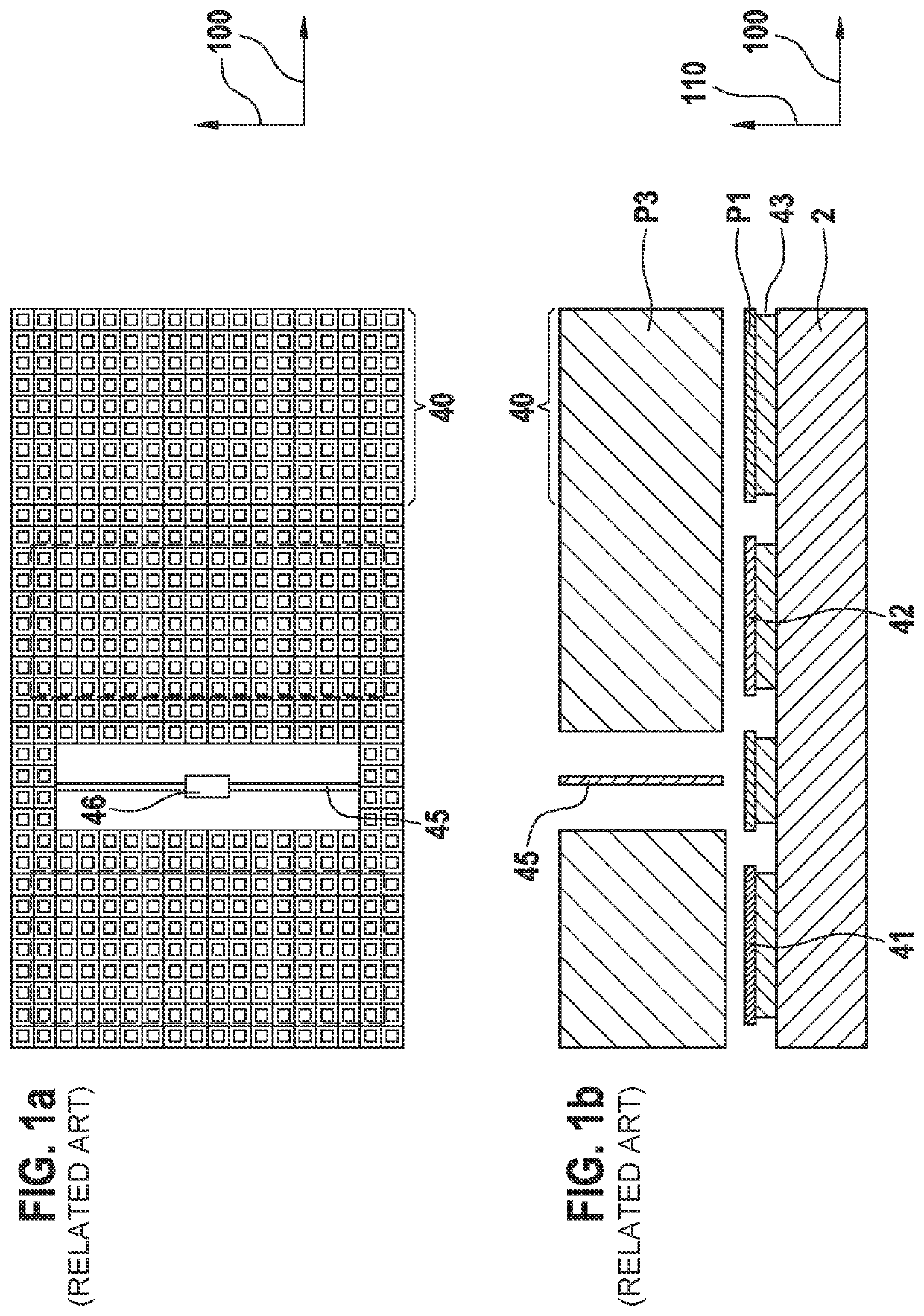Micromechanical sensor system, method for using a micromechanical sensor system
a micromechanical sensor and sensor technology, applied in the direction of speed/acceleration/shock measurement, flexible microstructural devices, instruments, etc., can solve the problems of reducing the restoring force of springs, increasing the risk of adhesion (stiction), and ultimately showing an increased tendency of sensors to adhesion, so as to increase the overload protection and reduce the risk of adhesion
- Summary
- Abstract
- Description
- Claims
- Application Information
AI Technical Summary
Benefits of technology
Problems solved by technology
Method used
Image
Examples
Embodiment Construction
[0040]Identical parts are denoted by the same reference numerals in the various figures and are therefore generally also cited or mentioned only once.
[0041]FIGS. 1a and 1b show a system of a capacitive acceleration sensor having a detection direction in a vertical direction 110 (z direction), perpendicular to main extension plane 100 of substrate 2, according to the related art. The sensor according to FIGS. 1a and 1b is designed as a “rocker structure” or “rocker.” The sensor principle of these rockers is based on a spring-mass system in which, in the simplest case, a movable asymmetrical seismic mass 40, which is implemented in functional layer P3 in FIGS. 1a and 1b, together with two evaluation electrodes 41, 42 which are fixed on the substrate at a distance d0 and implemented in layer P1, forms two plate capacitors having capacitances C1 and C2. Seismic mass 40 is connected to the base or substrate 2 via at least one torsion spring 45 (for symmetry reasons, usually rather two to...
PUM
 Login to View More
Login to View More Abstract
Description
Claims
Application Information
 Login to View More
Login to View More - R&D
- Intellectual Property
- Life Sciences
- Materials
- Tech Scout
- Unparalleled Data Quality
- Higher Quality Content
- 60% Fewer Hallucinations
Browse by: Latest US Patents, China's latest patents, Technical Efficacy Thesaurus, Application Domain, Technology Topic, Popular Technical Reports.
© 2025 PatSnap. All rights reserved.Legal|Privacy policy|Modern Slavery Act Transparency Statement|Sitemap|About US| Contact US: help@patsnap.com



